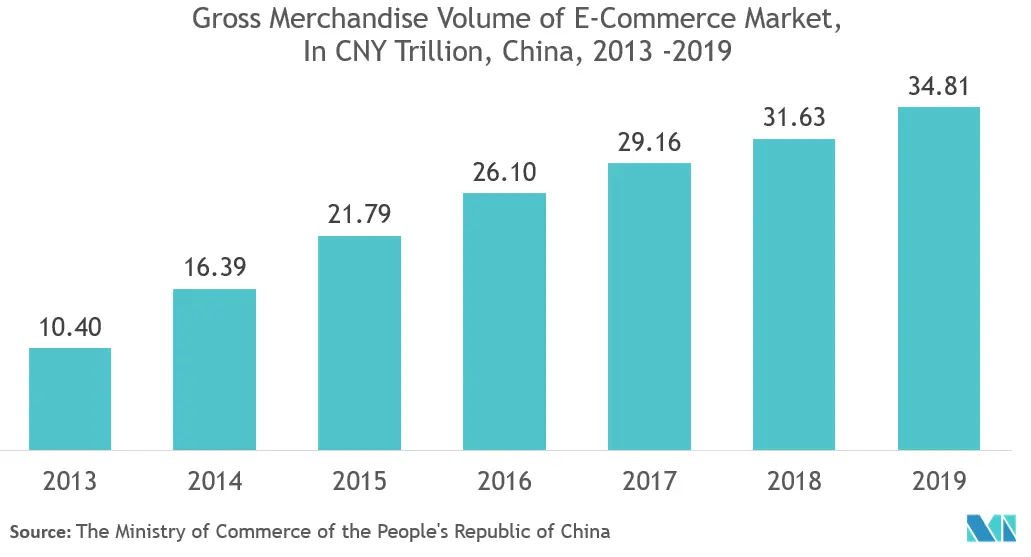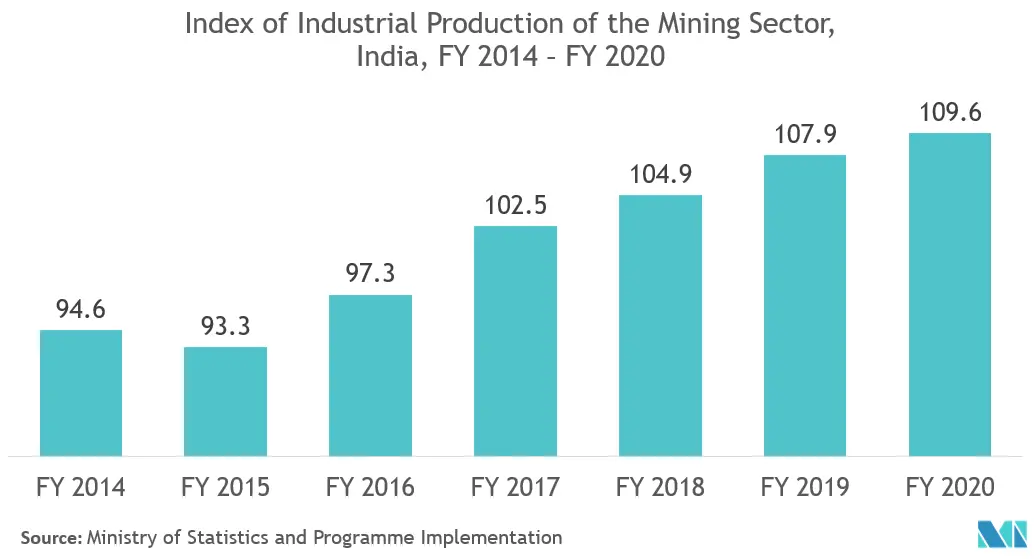Market Trends of Asia-Pacific Conveyors Industry
This section covers the major market trends shaping the APAC Conveyors Market according to our research experts:
Retail is Expected to Hold Significant Share
- The retail industry has transformed significantly in the region with the advent of automation and IT-based solutions. To optimize store space utilization and to stay profitable, retailers are adopting automated warehousing and distribution solutions. The retail sector utilizes the conveyors for distribution and warehousing, sorting, and cross-docking. Growth in shopping through online mode in the Asia-Pacific regions has created a conducive market environment. Retail is one of the significant industries wherein the requirement for conveyors and sortation is essential. It immensely helps online retailers to sort goods and increase good delivery efficiency. Furthermore, retail companies are also adapting to this technology to perform last-mile delivery.
- Furthermore, the increasing usage of online retailing, coupled with changing consumer behavior toward goods purchasing, is likely to impact the adoption of conveyor and sortation systems positively. Additionally, companies already invested in sortation facilities are expected to increase their capacity, owing to the rising demand. The Asia Pacific has emerged as one of the world's largest e-commerce hub. The region has witnessed a rapid growth in retail e-commerce due to the rising middle-class population in China, India, and Indonesia and the rise in popularity of mobile gadgets.
- In April 2019, logistics automation specialist Swisslog, member of the KUKA Group, received an order from IKEA Supply (Malaysia) worth EUR 43 million. Located at Pulai Indah, the Distribution Center run by Inter IKEA would be its largest regional distribution center in the Asia Pacific region. Inter IKEA selected Swisslog Malaysia for its local experience in implementing pallet warehouse solutions for major projects. Swisslog would provide a fully integrated, end-to-end material handling automation solution for Inter IKEA. The project comprises 215,000 pallet locations of clad-rack, 21 warehouse pallet stacker cranes Vectura, the pallet conveyor system ProMove, the electric Monorail System, and the Swisslog software SynQ.
- According to the IBEF, the Indian e-commerce market is expected to grow to USD 200 billion by 2026 from USD 38.5 billion as of 2017. There is a rising demand for international brands and better-quality foreign products among digitally connected Indian shoppers owing to increasing income levels and awareness. In India, the product consumption pattern is changing at a significant rate. The increasing middle-class population is likely to drive the need and demand for sortation systems to cater to the retail sector's rising demand. With increasing work expenses and extra cash, the market for the Indian automated equipment such as conveyors is growing, which is majorly driven by retail, post, and parcel industries.

India is Expected to Witness Significant Growth
- The rise in infrastructure investment by the government and investments from industries and the 'Make in India' initiative is expected to drive the demand for conveyor systems in India. India's government aims to increase the manufacturing sector's share to the gross domestic product (GDP) to 25% by 2022, from 17% in 2018. Thus, manufacturers are likely to incorporate automation systems such as conveyors to achieve this target. Conveyors and sorters have been the traditional material handling equipment over the years in India. Nowadays, a combination of material handling equipment, including automated storage and retrieval systems, conveyors, and AGVs, is being deployed across different industries' supply chains.
- In December 2019, BYD India, a subsidiary of the BYD Group, has expanded into India's material handling equipment business, making it the only Indian company to offer MHE products with lithium-ion phosphate batteries. The company's primary focus is on 3PL (third party logistics), warehousing, and logistics companies. According to BYD India, the Indian warehousing and logistics sector is anticipated to attract nearly USD 10 billion in investment over the coming years. The warehousing industry's process optimization and technological advancement is the key driving force behind the logistics sector's growth.
- Conveyor belts offer significant advantages in the mining industry, including faster loading, easing the load on road networks, savings on diesel costs, a cleaner environment, and a stoppage of possible pilferage. In June 2020, Coal India Ltd announced to invest INR 15,700 crore in conveyor belts that will replace road movement between mines and wagons. The first phase will upgrade infrastructure at 35 mines, each with a capacity of four million tonnes per annum (MTPA). This involved capital expenditure (Capex) of about INR 12,300 crore and a total capacity of 406 MTPA. Phase-2 includes 14 projects in which four subsidiaries will spend INR 3,400 crore for a total capacity of 100.5 MTPA.
- The Indian market is projected to be one of the world's largest aviation markets by 2026, enabling India's airports to be future-ready. Additionally, According to Civil Aviation Minister, India plans to construct 100 new airports with an investment of USD 60 billion in the next 10-15 years to make air travel more affordable. These factors boost the demand for conveyors in the country. The automotive end-user industry in the country, which handles a high volume of materials and has a high throughput ratio, is also expected to opt for conveyor systems.


